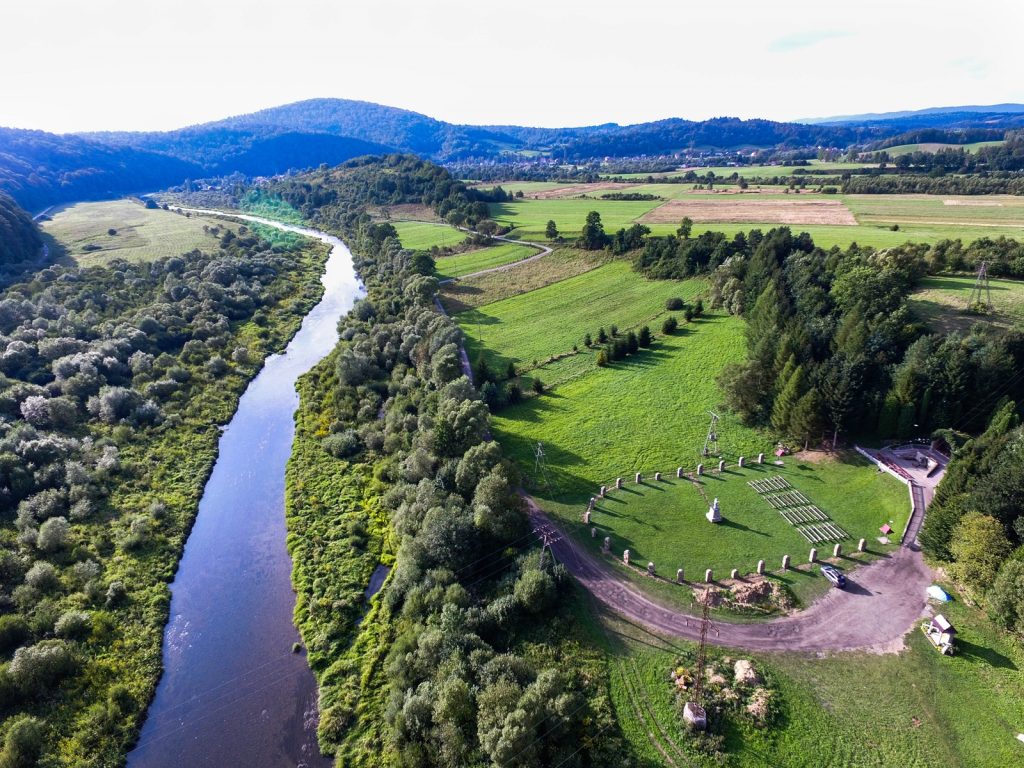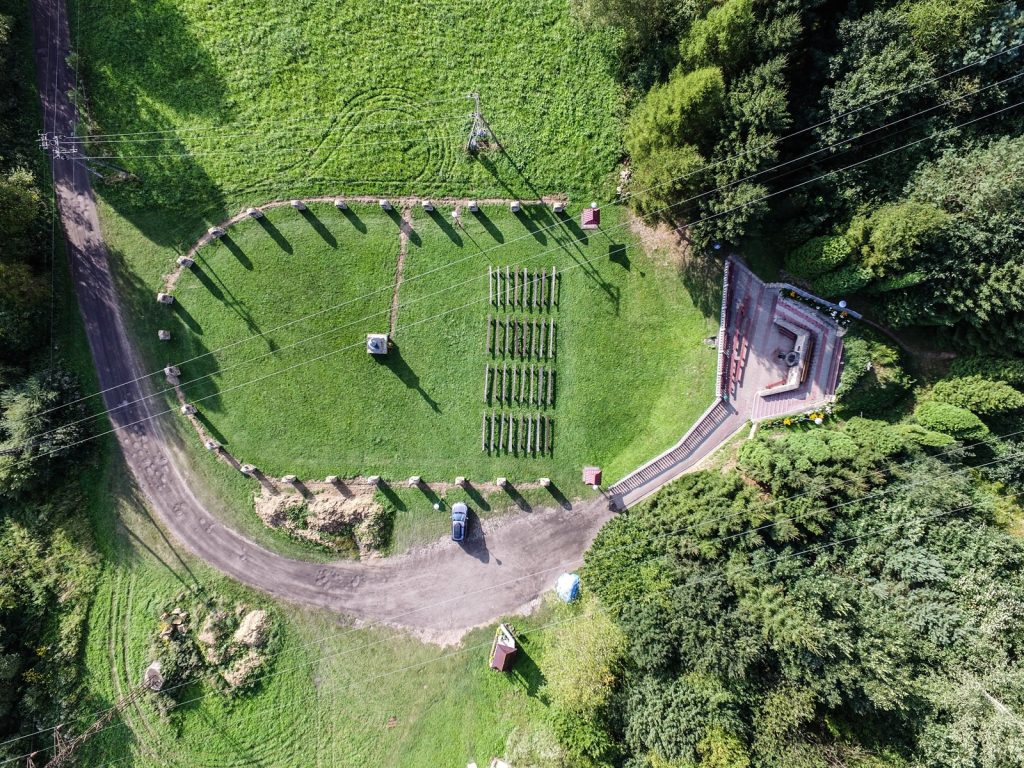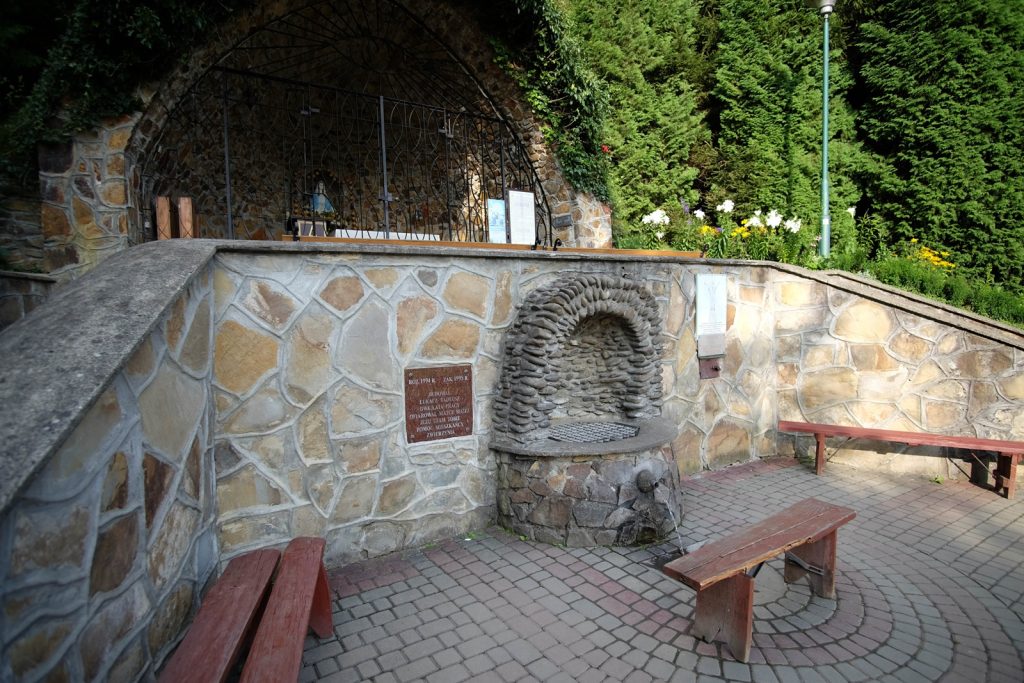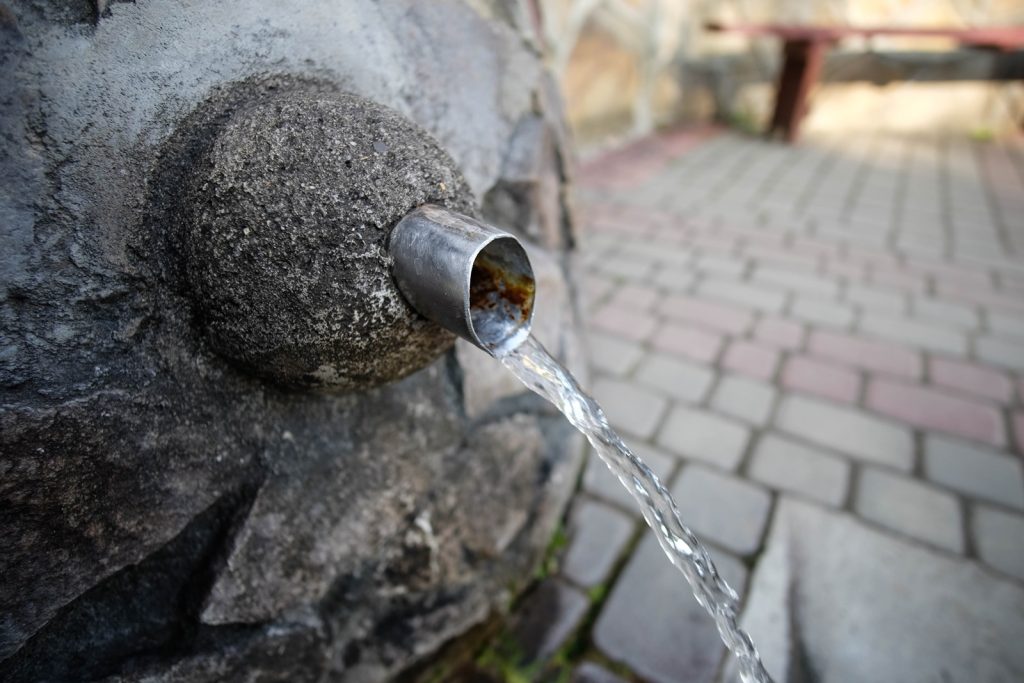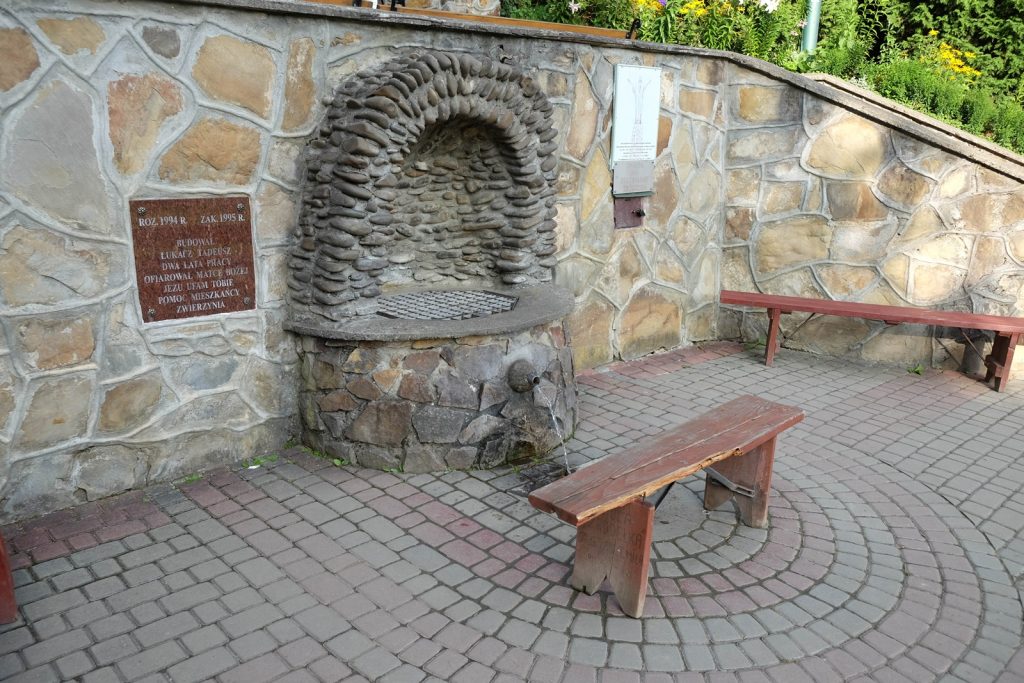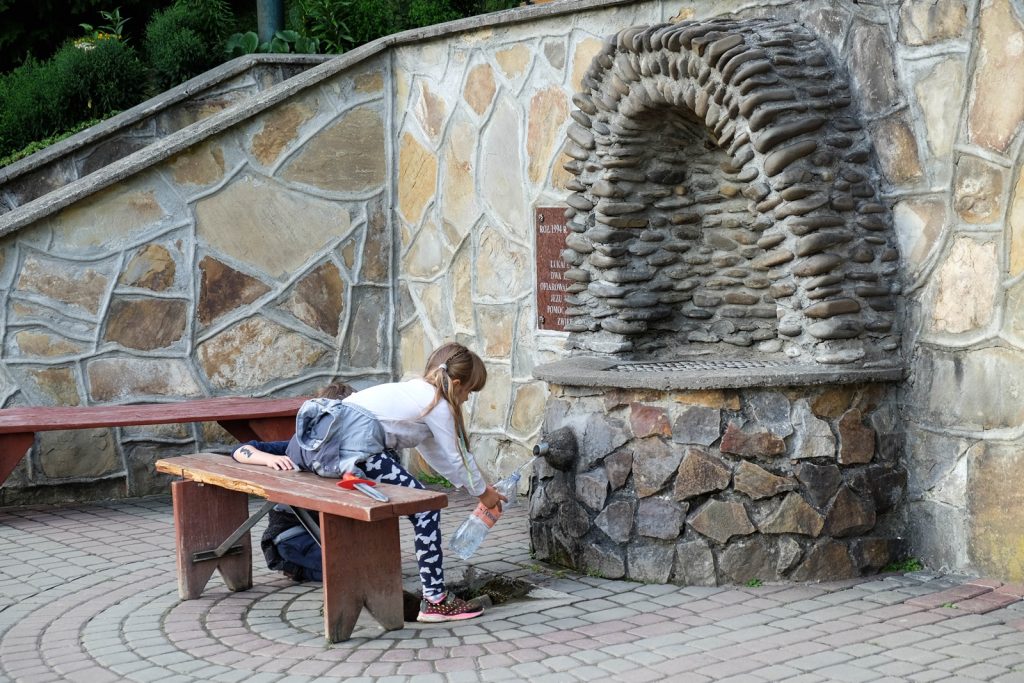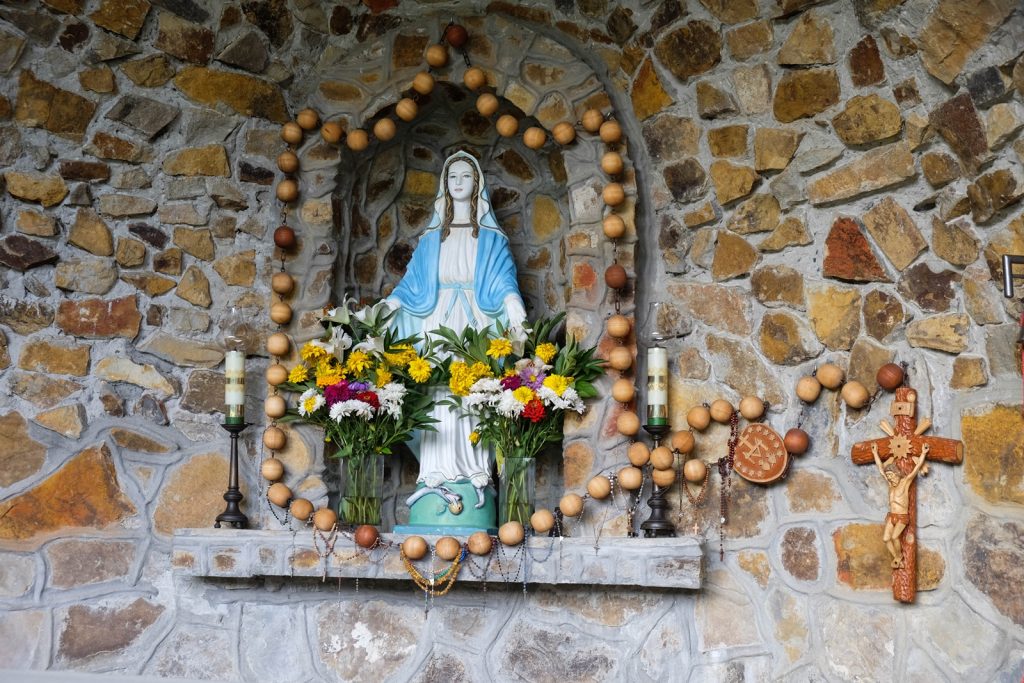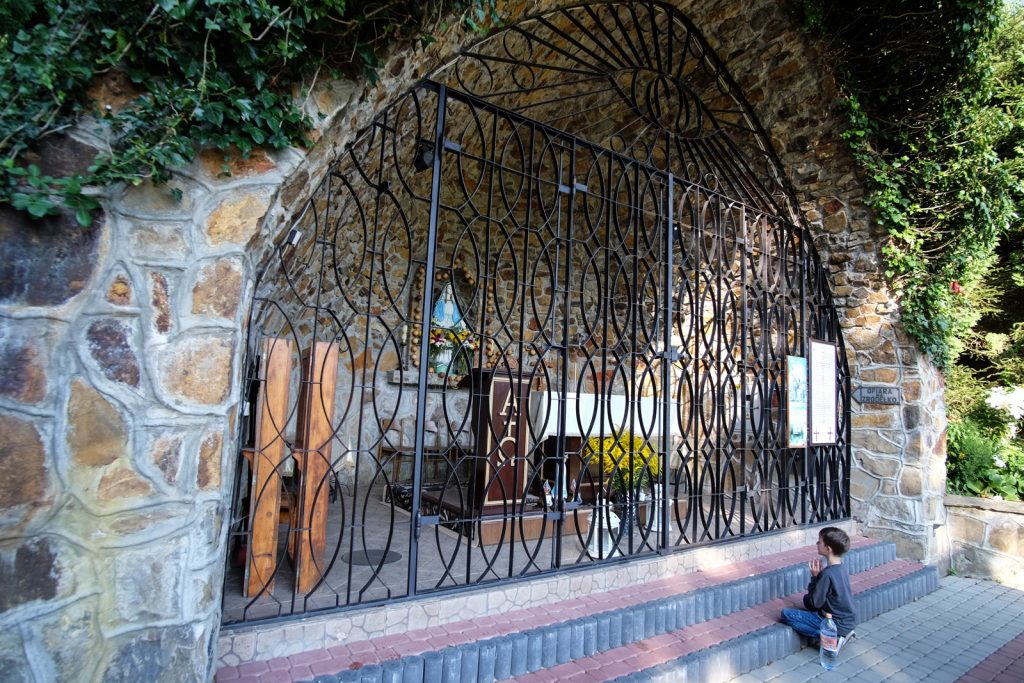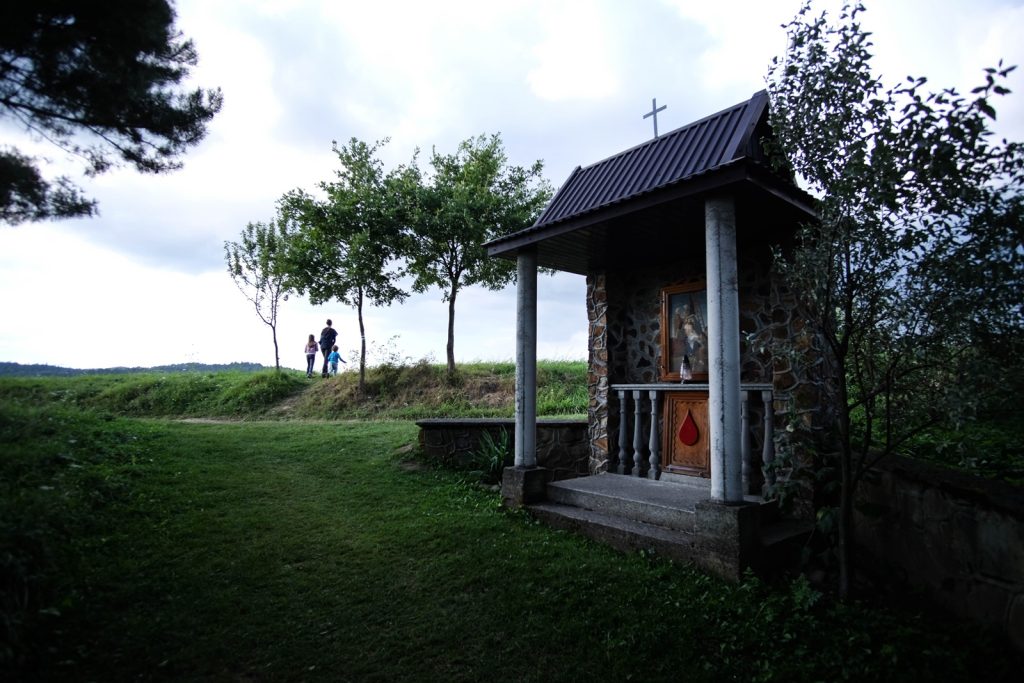According to legends, an Orthodox church was once thought to have been built at the site. At the time, a 13th-century cross from the city of Limoges, France, was found in a nearby spring, or well. A wooden cross was placed over the well. According to beliefs, water from the spring had the power to heal eyes and miraculously restore sight.
The miraculous spring in Zwierzyn is connected with the history of an unusual find - a richly decorated Limousin cross from the 1st half of the 13th century, made in France in the city of Limoges. Detailed information about the monument was quoted by archaeologist Prof. M. Parczewski in the article "Cross from Zwierzyn", which appeared in the magazine Połoniny in 1989 (M. Parczewski 1989).
Stored in the Przemyśl Diocesan Museum, the cross was described as early medieval by art historian A. Bochnak as early as 1922 (M. Parczewski 1989, 8). Earlier it was said to have been kept in an Orthodox church in Zwierzyn built in the second half of the 18th century. In 1972, the monument was described by M. Pietrusinskaya as: "enameled processional cross, 1st half of the 13th century Wood, gilded copper sheet, with grooved enamel and engravings, figural elements partially repoussed; dimensions: 28.7 x 22 cm (...)." (description after M. Parczewski 1989, 7).
M. Parczewski linked the information about the monument, which is in the collection of the Diocesan Museum in Przemyśl, to a legend recorded in the second half of the 19th century by ethnographer Oskar Kolberg, telling about the circumstances of the miraculous spring in Zwierzyn on the San River (M. Parczewski 1989, 9; O. Kolberg 1973, 80).
Oskar Kolberg cites the following entry about the village of Zwierzyn:
There is a legend of a miraculous cross, miraculous water, etc. When the stones were brought down for the construction of the house of God, it was noticed that what was brought down during the day was lost somewhere during the night. They got hooked and became convinced that some saints were dismantling and hauling away these stones. Then a well was dug there. The woman wanted to catch the cross she saw in the water; when she reached for it with her hand, the cross receded into the depths; soon she saw it rise again; she reached again but again it removed itself, and so for the third time. Only when she remembered that it was not right to reach for it with her bare hand did she take off her handkerchief from her head and grasped the cross through the handkerchief; then she saw it rise out of the water. This cross, about a foot high, is still in the church. One of the Uniate priests (30 years ago) had a larger cross erected in this well, which stands over it. He claims that God appeared to him in a dream and had the same cross erected. Sick people use the water from this well for blindness or eye diseases (O. Kolberg 1973, 80).
Among the local population, M. Parczewski noted the same tradition as cited a century earlier by O. Kolberg. Before World War II, every year on September 27 (the Feast of the Exaltation of the Holy Cross), hundreds of believers would gather at this place, and the consecration of water was performed. The cross-relic was then shown to the faithful. It is possible that the name of the village Zwierzyn (Zwizenye) comes from the feast of the "Elevation of the Holy Cross" as noted by O. Kolberg. According to M. Parczewski, in that case, the discovery of the cross and the beginnings of the cult of the place would have to have occurred before 1580, when the village is first mentioned in the sources (M. Parczewski 1989, 11).
In the 1990s the site was renovated and developed. This was done after the publication of the results of the archaeological investigation conducted by M. Parczewski in the newspaper "Nowiny". The text written by J. Miszczak contributed to the spread of knowledge about the miracle site and the cross itself (J Miszczak 1994). The Way of the Cross and the grotto of the Virgin Mary were built. Today, the spring enclosed by the grotto is visited by numerous believers.
Sources of information: O. Kolberg, Sanockie-Krośnieńskie, III, Works All 51, 1973, 80; M. Parczewski, Krzyż ze Zwierzynia, Połoniny 89. Informator Krajoznawczy, 1989, pp. 4-12; J. Miszczak, Śledztwo w sprawie krzyża, Nowiny 65 (13688), 1-4.04.1994; field queries.
Geographic coordinates: 49.43491, 22.39889
Location on Google maps

